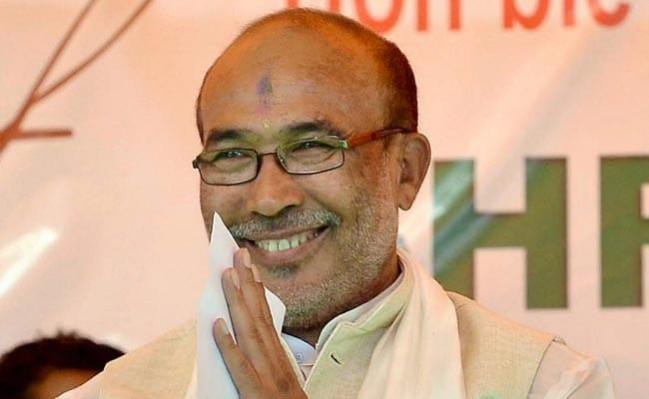
Last May, the clashes between Manipur's majority Meitei community and its Kuki-Zomi tribes resulted in one of the most tumultuous times in state's history. The unrest that suddenly spread in the north-eastern state rendered it unfunctional for many months to come with sporadic incidents of violence being reported ever since.
In the conflict-ridden Tengnoupal district, said to be the epicenter of violence in the state since the end of previous year, on Wednesday, yet again several incidents were reported that rendered two police commandos dead and three others injured. Several houses were also engulfed in flames, apart from the simultaneous attacks at multiple security outposts in Manipur's Moreh town bordering Myanmar. The continuous gunfire attacks by militants involved rocket-propelled grenades too. Reportedly, it took two fire engines from neighboring Myanmar to douse the flames engulfing houses at Kanan Veng in Moreh and another residential cluster near Moreh Hospital.

A large number of women took to the streets in Imphal to protest against the BJP government's failure to protect security forces from militant attacks. Several ground reports claim that some of them attempted to storm the bungalows of CM N Biren Singh and governor Anusuiya Uikey but their attempts were foiled by the police. The attacks come against the backdrop of two Moreh residents Philip Khongsai and Hemkholal Mate, arrested for killing Subdivional Police officer Chingtham Anand last year, being remanded in custody for nine days.
What led to violence in the first place?
The intense and widespread violence, which began on May 3, 2023 was first triggered by an order of the Manipur High Court directing the State government for a recommendation on the inclusion of the majority Meitei community in the ST list.
The current status of the issue of ST list
Some fear that the ethnic conflict is likely to get deeper beneath the surface with the latest attempt by the Centre to initiate a process for the possible de-scheduling of certain Kuki and Zomi tribes.
Now with the Centre asking the Manipur government to examine representation seeking delisting of the hills-based Kuki and Zomi tribes from the ST list, there is a very strong potential that the already existing divide between the communities will further widen and deepen. Following Centre's orders Chief Minister N Biren Singh announced that a special committee might be tasked with looking into the matter.
The representation, sent by Maheshwar Thounaojam, National Secretary of the Republican Party of India in Manipur, argued for the inclusion of the majority community that is Meiteis in the ST list and alongside the exclusion of certain Kuki and Zomi tribes. His representation raises objections against the inclusion of three of the tribes, namely, any Mizo (Lushai) Tribes, Zou and any Kuki tribes, on the basis that, "they are not indigenous" to Manipur. Meiteis argue for ST status because of their inability to otherwise own land in the forested hill districts. The Kuki and Zomi tribes argue that the claims of them not being indigenous does not hold true as the first published list of Scheduled Tribes in 1950 lists three tribes, namely "any Kuki tribe, any Naga tribe and any Lushai tribe."
At stake is India's territorial integrity, peace and sovereignty. With the issue far from over and state far from normalcy, despite assurances by CM N Biren Singh, a Meitei himself, since last November that the, "state is 90% under control." It's only as much as a state far from normalcy can be under control. With more than 75000 displaced and Kuki and Meitei communities being kept under completely separate buffer zones while under the strict watch of security forces and resembling an international border.

















